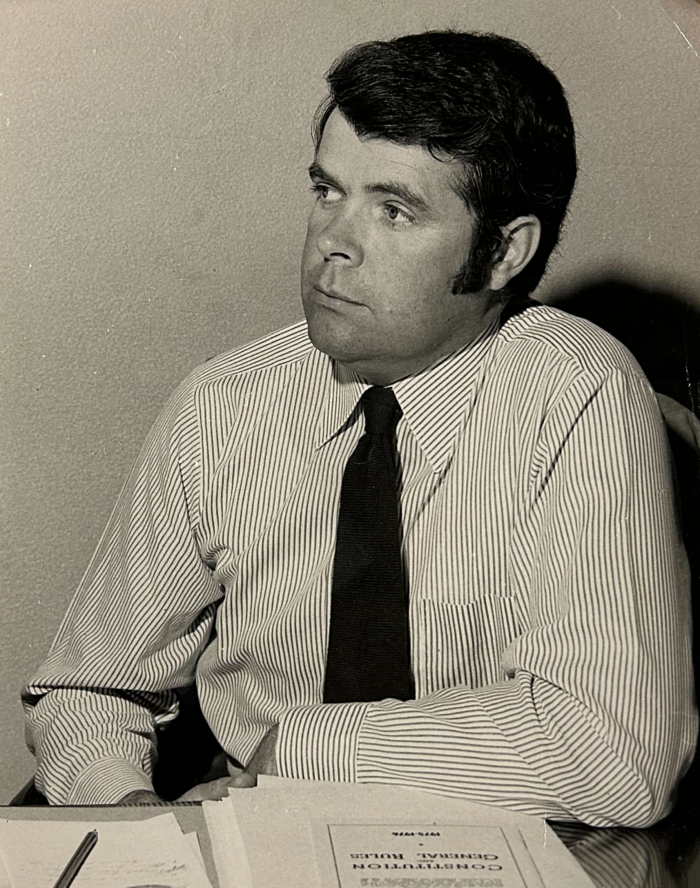The Tasmanian Wilderness World Heritage Area is celebrating its 40th anniversary this week.
The Rockliff Liberal Government acknowledges and pays respect to 40,000-plus years of Aboriginal occupation and traditional practices that have allowed us to celebrate and pass on this precious landscape to future generations, being one of the world’s most outstanding natural and cultural treasures.
The Western Tasmanian Wilderness National Parks, as it was first known, was inscribed on the World Heritage List on December 14, 1982, representing excellent examples of the natural value criteria prescribed by United Nations Educational, Scientific and Cultural Organisation (UNESCO) under the World Heritage Convention.
The original area of some 770,000 hectares was increased to 1.34 million hectares in 1989 through a subsequent nomination and boundary extension, which also included the addition of the popular and outstanding landscape that is the Walls of Jerusalem National Park. The world heritage area was also renamed at this time, to be the Tasmanian Wilderness World Heritage Area (TWWHA).
The world heritage area now covers about 1.59 million hectares, which is approximately 23 per cent of Tasmania.
It is one of the world’s largest and most spectacular temperate wilderness areas, and is one of only two world heritage areas globally to meet seven out of 10 of UNESCO’s World Heritage criteria.
The TWWHA includes a range of land tenures and reserve classes, including Aboriginal land, State and Regional Reserves, Conservation Areas, and an incredible seven National Parks. There are extensive areas of high wilderness quality, ensuring habitats of sufficient size to allow the survival of endemic and rare or threatened species, including the Tasmanian wedge-tailed eagle, the orange-bellied parrot and marsupial carnivores.
Some of the oldest trees in the world are also found within the world heritage area, such as Huon pines that are more than 2000 years.
Because of its size and remoteness, the TWWHA also contains areas that provide ongoing opportunities for scientific discovery. Significant progress has been made in recent years into understanding the cultural values of the area through identifying important Aboriginal occupation sites and new rock and cave art sites along with finding more and more unique and threatened animal species.
Minister Jaensch said the Government was committed to preserving the World Heritage Area, with visitation in a sensitive way to protect and promote the outstanding universal value.
“The TWWHA provides for rare and highly valued recreational, educational and tourism experiences for both Tasmanians and tourists,” Minister Jaensch said.
While many will take the opportunity to undertake their own self-guided adventure experiences, the World Heritage Area also supports our economy with Nature Based Tourism Operators providing a range of diverse and accessible tourism ventures for people to get out into the landscape and connect with nature.
This includes a range of offerings such as canoeing and kayaking, mountain biking, cruising spectacular waterways, and hiking along iconic trails such as the Overland Track.
Minister Jaensch said our skilled and committed Tasmania Parks and Wildlife staff are out in the TWWHA providing information and education to visitors, while out in the field, through the delivery of organised cave tours, or as part of our Discovery Ranger and Wilderness Track Ranger programs.
“The importance of people connecting to this remarkable landscape cannot be understated. With lived experiences, alongside opportunities for education, comes a new appreciation and opportunity for people to be deeply invested in caring and protecting the TWWHA,” Minister Jaensch said.
As part of an important step to ensure that any changes to the TWWHA are better understood, the Rockliff Liberal Government in June, delivered a suite of Status and Trends reports to ensure any changes to the values as a result of threats and management actions will be tracked and reported on every five years.
The Government continues to demonstrate its commitment to the management and protection of the area. This includes the delivery of recommendations and projects from a range of strategies and plans, including the TWWHA Management Plan, Tourism Master Plan, Fire Management Plan; Natural Values Climate Change Adaptation Strategy; and Biosecurity Strategy.
Minister Jaensch said Tasmanians can celebrate the TWWHA’s 40-year anniversary by visiting one of the many spectacular areas in this landscape.
“There are so many unique and spectacular places to discover, with the TWWHA being one of Australia’s largest conservation areas. Take some time to immerse yourself in nature, making lifelong memories and connections to this picturesque landscape. You can also help us protect the TWWHA by cleaning your boots, gear and vehicles, to prevent the spread of biosecurity risks, and please stay on the formed walking tracks, observe track signs, and head out after you have ensured you are adequately prepared,” Minister Jaensch said







